Operation manual - 2.Container・Truck Loading / Outer Box・Pallet Mixed Loading Simulation
3.Explanation of optimization setting conditions
Description of each engine and optimization settings
- Conditions that can be set for each engine
- Detailed explanation of optimization setting conditions
- ① Internal dimension height limit (unit: mm)
- ② How to arrange the L dimension of the cargo arrangement
- ③Upper and lower protrusion allowable area ratio (unit: %)
- ④ Front and rear division (order of product)
- ⑤ Upper and lower stacking setting
- ⑥ Protrusion allowable size (unit: mm)
- ⑦ Column Total Weight Limit (Unit: Kg)
- ⑧ Allowable Weight Difference (Unit: Kg)
1Conditions that can be set for each engine
Features of each engine
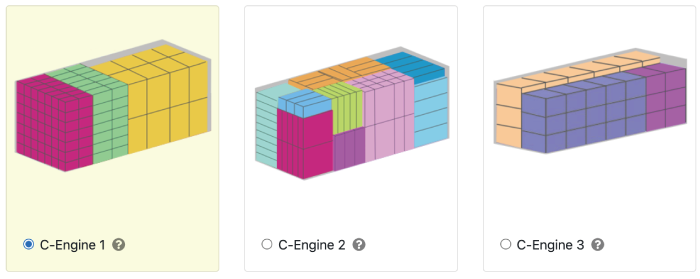
C-Engine 1 (loading priority engine)
Algorithm that gives priority to stacking products of the same size.
It is easy to imagine "how much space is left" and "how many more products of the same size will become blocks".
C-Engine 2 (general purpose engine)
Algorithm that prioritizes a high priority rate while grouping the same products.
Versatile enough for a wide range of industries.
C-Engine 3 (loading engine for machinery)
Algorithm that arranges large products in two columns, left and right, in a container.
Suitable for large items such as electronic, automotive, and mechanical parts.
Upper and lower combination conditions and column weight restrictions can be set.
Conditions that set the optimal conditions
The calculation conditions that can be set differ depending on the engine.
| Optimization setting conditions | Engine type | ||
| 1 | 2 | 3 | |
| ① Internal dimension height limit (unit: mm) | ○ | ○ | ○ |
| ② How to arrange the L dimension of the cargo arrangement | ○ | ○ | ○ |
| ③Upper and lower protrusion allowable area ratio (unit: %) | - | ○ | - |
| ④ Front and rear division (order of product) | - | - | ○ |
| ⑤ Upper and lower stacking setting | - | - | ○ |
| ⑥ Protrusion allowable size (unit: mm) | - | - | ○ |
| ⑦ Column Total Weight Limit (Unit: Kg) | - | - | ○ |
| ⑧ Allowable Weight Difference (Unit: Kg) | - | - | ○ |
2Detailed explanation of optimization setting conditions
| ① Internal dimension height limit (unit: mm) |    |
This parameter changes the internal height of the transportation equipment.
| Example A If you want to reduce the effective height of the container, enter a positive value for the internal height limit. |
Example B If you want to increase the effective height of the container, Enter a negative value for the internal height limit |
| If you want to lower the inner height of the container by 500mm as shown in the figure below, enter the inner height limit = "500". | If you want to increase the inner height of the container by 500mm as shown in the figure below, enter the inner height limit = "-500". |
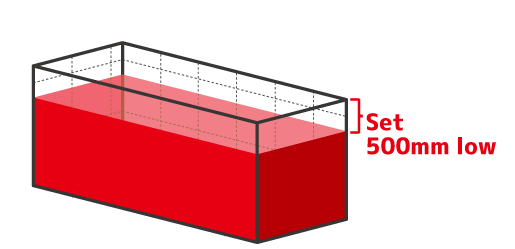 |
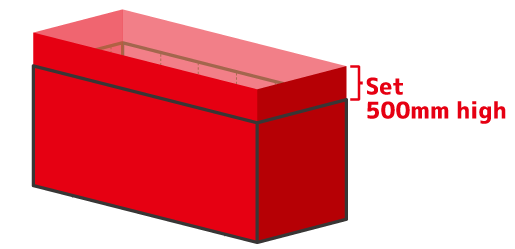 |
| ② How to arrange the L dimension of the cargo arrangement |    |
<Perpendicular to container> or <Parallel to container> can be specified.
* Valid only when product rotation is "horizontal rotation not possible"
* Valid only when product rotation is "horizontal rotation not possible"
| <perpendicular to container> | <Parallel to container> |
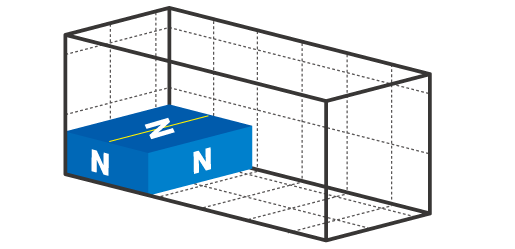 |
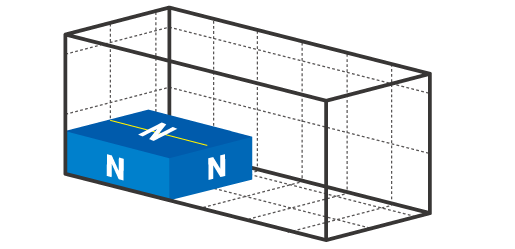 |
| ③Upper and lower protrusion allowable area ratio (unit: %) |  |
You can specify the allowable area when the upper product protrudes from the lower product.
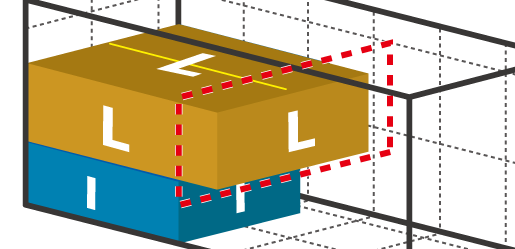 |
Set the area ratio of the part where the upper product protrudes from the lower product in %. (Can be set from 0% to 50%) * Enter "0" if the extension is not allowed. |
| ④ Front and rear division (order of product) |  |
This parameter specifies the order of loading.
| You can specify the order in which products are loaded if they have different loading locations or multiple unloading locations. * It is necessary to set the product order when creating data. |
 |
| ⑤ Upper and lower stacking setting |  |
This is a parameter that limits the size of upper and lower stacking products.
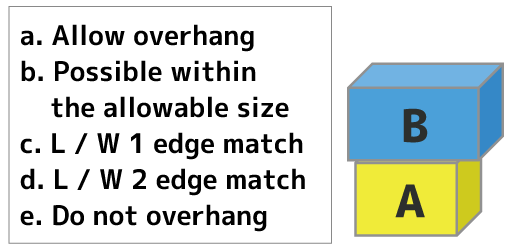 |
Set whether or not the upper product protrudes from the lower product. * If it is possible to protrude (when set to b and c on the left), Upper and lower stacking is possible within the allowable size range of ⑥. |
| ⑥ Protrusion allowable size (unit: mm) |  |
If the vertical stacking setting in ⑤ is b or c, you can specify the length of overhang in mm units.
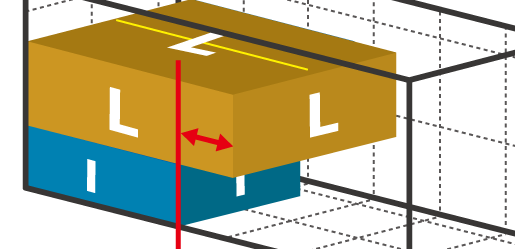 |
Enter the limit length of overhang in mm. |
| ⑦ Column Total Weight Limit (Unit: Kg) |  |
You can specify the maximum value for the total weight of products stacked on top and bottom.
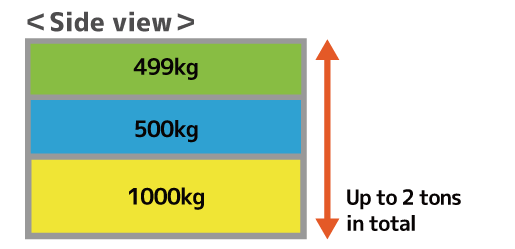 |
Specify the limit value for the total weight of stacked products. Example) Up to 2t |
| ⑧ Allowable Weight Difference (Unit: Kg) |  |
You can specify the allowable range of weight difference between products stacked on top and bottom.
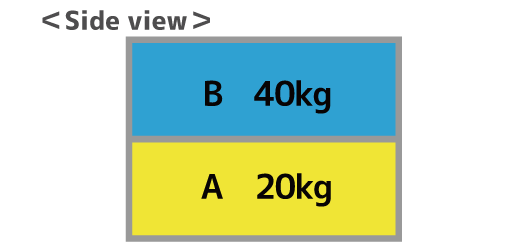 |
Please specify the weight difference when the weight of the product stacked on the top and bottom is reversed. *Allow the top product to be heavier than the bottom product |

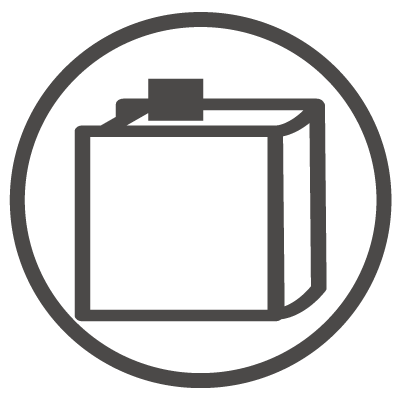 目次
目次 FAQ
FAQ